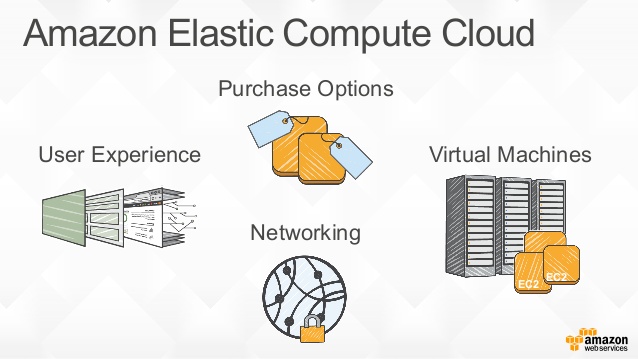EC2 it is a cloud service that provides virtual servers (Amazon EC2 Instance), 2 types of data warehouses, as well as a Load Balancer.
Many of you know about VPS – Virtual Private Server. So, EC2 is nothing more than a service that provides VPS in a real cloud, where the server can easily migrate between nodes, and the storage can be expanded till the almost dimensionless. That’s why in the name is the word «Elastic».
Functionality of Amazon Elastic Compute Cloud
EC2 allows you to run pre-configured servers with preinstalled OS: Amazon Linux, Red Hat EL, Suse ES, Windows 2008, Oracle EL.
It is also possible to create your own images (AMI – Amazon Machine Image) and use any Linux. The platform uses Debian Squeez as the main system, but of course you can run and work on almost any Linux distribution, such as CentOS or Ubuntu. Also it supports RHEL and Suse ES.
It is possible to configure server access protection. EC2 instances are combined into Security Groups with the ability to restrict access on ports from IP or subnets.
Load balancing and autoscaling are very important features of EC2. You can create rules under which it will be possible automatically increase the number of servers, for example, if one or more servers can not deal with the load. Another AWS service, Amazon Cloud Watch, monitors server health. Using this service, you can create all sorts of checks, with the help of which the most important indicators of the OS are monitored.

Adding an almost infinite number of disks with an almost infinite amount of storage EBS (Elastic Block Storage) is one of the types of EC2 storage. Its benefit is that the disks created using this technology are independent of the VPS nodes and located on special Storage servers, compering to Instance storages, which are located directly on the virtualization servers.
While using EBS, you can add disks of any size to the running servers.
Elastic IP addresses make possible quickly change the server address, for example, in case of avoiding the DNS propagation – the time of updating the DNS zone around the world.

Creating instant captures (Snapshot) allows you to make a cast of the disk and use it as a source for AMI (Amazon Machine Image), as well as for a simple backup of the OS.
EC2 Billing
EC2 is billed hourly; some subservices such as EBS have monthly billing. For each subservice there is a separate billing with a pricing per hour or per month.
Also EC2 instances have a Reservation – you must pay on spot for 3-4 months of the server’s operation and after this, the server’s operating hour is ~ 1.5 times cheaper. Such Reservations are convenient if EC2 in is used on an ongoing basis.